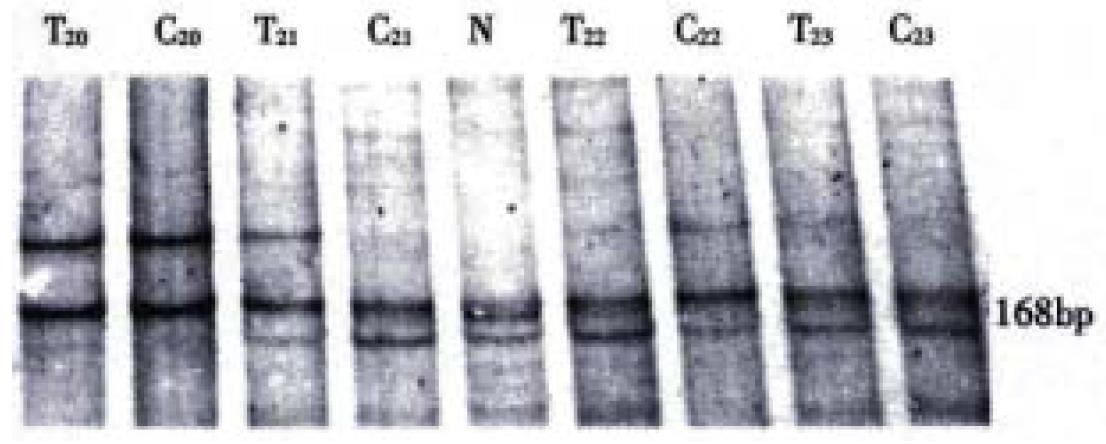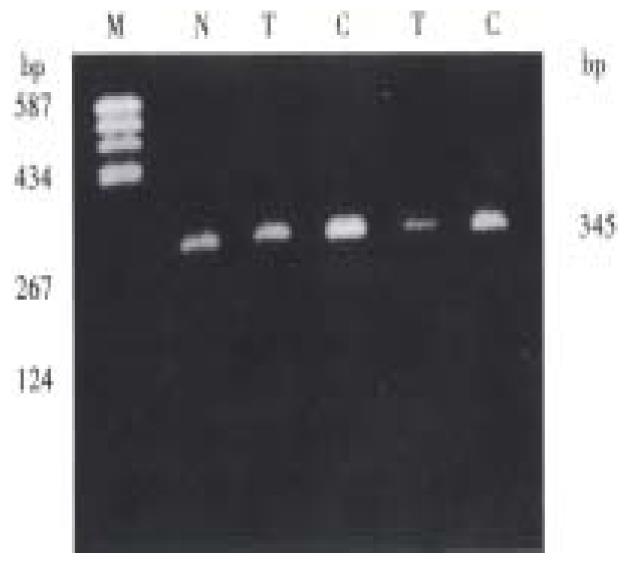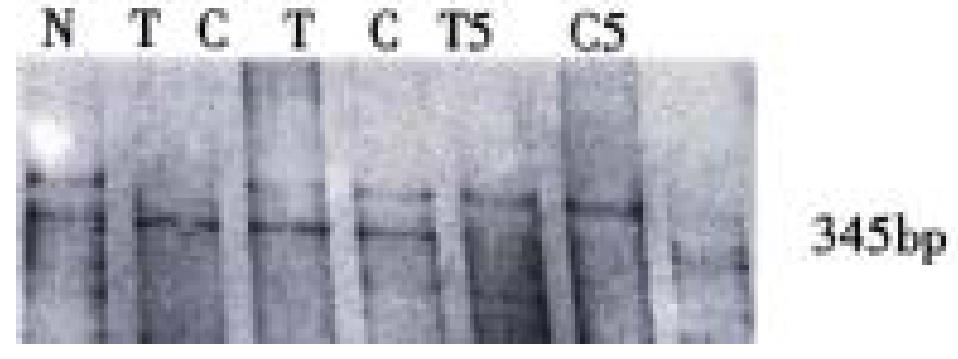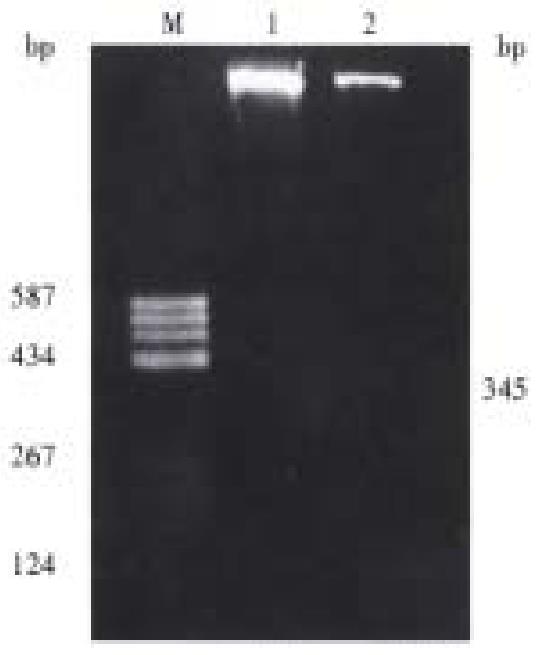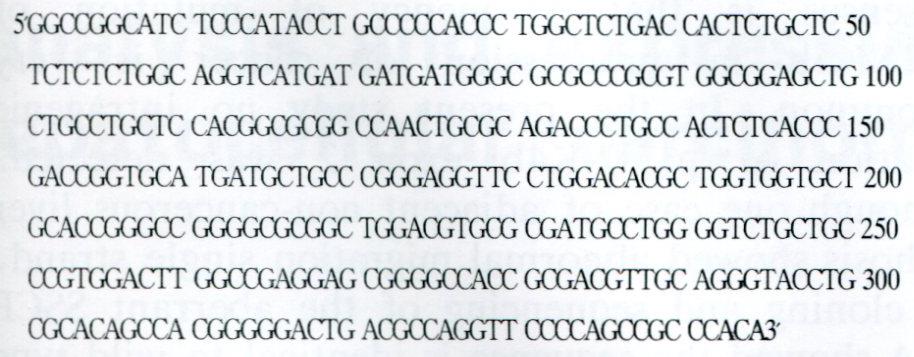Copyright
©The Author(s) 2000.
World J Gastroenterol. Jun 15, 2000; 6(3): 411-414
Published online Jun 15, 2000. doi: 10.3748/wjg.v6.i3.411
Published online Jun 15, 2000. doi: 10.3748/wjg.v6.i3.411
Figure 1 PCR-SSCP analysis of p16 gene intron 1 and exon 2.
At the SSCP analysis T20 and C20 showed as A pattern; T23 and C23 showed as B pattern; T21 and C21 showed as B' and B pattern, respectively; T22 and C22 showed as B and B' pattern, respectively. T = Human hepatocarcinoma; C = Adjacent non-cancerous liver cirrhosis; N = Normal human leucocyte
Figure 2 PCR product analysis of p15 gene exon 2 in human hepatocarcinoma on agarose gel.
M = pBR322/Hea III; N = Normal human leukocyte; T = Human hepatocarcinoma; C = Adjacent non-cancerous liver cirrhosis
Figure 3 PCR-SSCP analysis of p15 gene exon 2.
N = Normal human leukocyte; T = Human hepatocarcinoma; C = Adjacent non-cancerous liver cirrhosis
Figure 4 Restriction enzyme analysis of recombinant plasmid which contains aberrant single strand of p15 gene exon 2.
M = pBR322/Hea III; 1 = Vector (pUC118) digested with EcoR I and Hind III; 2 = pP15E2 digested with EcoR I and Hind III
Figure 5 The sequence of p15 gene exon 2 in pP15E2 recombinant plasmid.
- Citation: Qin Y, Li B, Tan YS, Sun ZL, Zuo FQ, Sun ZF. Polymorphism of p16INK4a gene and rare mutation of p15INK4b gene exon2 in primary hepatocarcinoma. World J Gastroenterol 2000; 6(3): 411-414
- URL: https://www.wjgnet.com/1007-9327/full/v6/i3/411.htm
- DOI: https://dx.doi.org/10.3748/wjg.v6.i3.411









